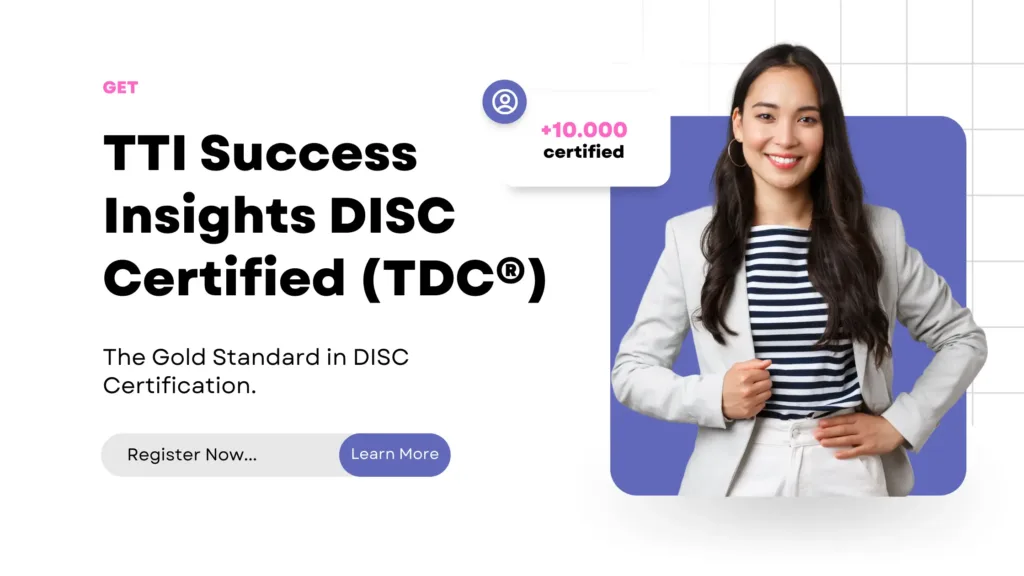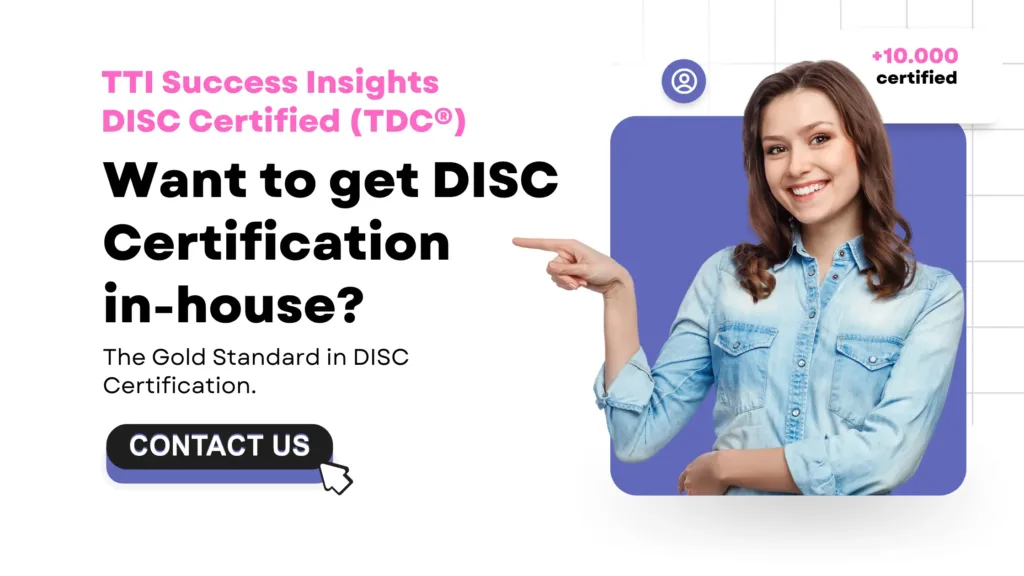Mastering DISC Communication Through Presentations

In the intricate art of presentation, understanding your audience’s distinct communication styles is crucial for success. The DISC model, which categorizes communication preferences into Dominance, Influence, Steadiness, and Compliance, serves as a powerful tool in crafting messages that resonate deeply with every member of your audience. This model not only enhances clarity and engagement but also ensures that your presentations are memorable and effective.
Understanding DISC Profiles
The DISC framework provides insights into the primary behavioral tendencies of an audience, allowing presenters to tailor their approach:
Compliance (C): People with this style are detail-oriented and analytical. They appreciate presentations that are thorough, well-researched, and data-driven.
Dominance (D): Individuals with this style are result-oriented, preferring direct and efficient communication. They appreciate concise presentations that are straight to the point.
Influence (I): These are the enthusiastic social butterflies of the audience. They respond well to energetic, engaging presentations filled with stories and humor.
Steadiness (S): This group values stability and support. They prefer methodical, well-structured presentations that create a sense of comfort and trust.
Techniques for Tailored Presentations
Engaging ‘D’ Style Audiences:
- Be Bold and Brief: Start with a strong, compelling statement and keep your content focused on results and efficiency.
- Visual Impact: Use clear, impactful visuals to illustrate your points succinctly.
Connecting with ‘I’ Style Audiences:
- Warm and Welcoming Tone: Start with a personal anecdote or joke to engage these listeners right from the beginning.
- Interactive Elements: Include interactive elements like Q&A sessions or live polls to maintain their interest.
Reaching ‘S’ Style Audiences:
- Consistent and Calm Delivery: Use a steady, reassuring tone throughout your presentation to align with their preference for stability.
- Detailed Agendas: Provide clear, detailed agendas that outline your presentation to help them follow along comfortably.
Detailing for ‘C’ Style Audiences:
- Data-Driven Content: Integrate charts, graphs, and statistics to support your claims and satisfy their analytical nature.
- Structured Flow: Organize your presentation logically, ensuring each part flows seamlessly into the next.

Assessing Your Audience
Before delivering your presentation, it’s crucial to conduct a thorough assessment of your audience’s DISC styles to tailor your approach effectively. This can be achieved through careful observation and direct interaction. Pay attention to verbal cues, body language, and engagement levels during preliminary discussions to infer their DISC profiles. Additionally, consider implementing a quick, informal poll at the beginning of your session to explicitly determine their preferences. These insights allow you to adjust your communication style, ensuring that your presentation resonates with the dominant behavioral traits present in the room, leading to a more impactful and engaging delivery.
Balancing Techniques for Mixed Audiences
In scenarios where your audience comprises a mix of all DISC styles, it’s essential to blend your techniques effectively to engage each type and deliver an impactful presentation. Here’s how to strike the right balance:
Start with Energy
Begin your presentation with a compelling and energetic opening to capture the attention of Dominant (D) and Influential (I) types. They are more likely to respond to an introduction that is bold, dynamic, and focused on immediate value.
Example: If presenting a new business strategy, start with a headline like, “Unlock a 30% Revenue Growth in 6 Months.” Follow it up with a concise success story that conveys tangible results. For instance, “Last quarter, we implemented this approach with XYZ Corporation, leading to a remarkable 35% increase in revenue in just three months.”
Incorporate Stories and Data
To keep Influential (I) types engaged, weave in captivating stories and real-world examples that align with your main message. Intermingle these with solid data and a logical structure for Compliance (C) and Steadiness (S) types.
Example: “Our client, Jane, a senior marketing manager, was struggling with declining engagement rates. By implementing our new digital strategy, she saw a 45% uplift in engagement in just six weeks. Here’s the data to prove it:”
Statistical Evidence:
Average Engagement Rate Before Implementation: 12.3%
Average Engagement Rate After Implementation: 17.8%
ROI: 4:1
Structured Roadmap:
Audit Current Strategies
Identify Key Metrics
Implement Targeted Campaigns
Measure and Optimize Continuously
Summarize with Strong Points
Wrap up your presentation by highlighting strong, actionable items that resonate with Dominant (D) types, ensuring you leave a lasting impression. These individuals value clarity and decisive action, so offer clear steps or challenges.
Example: “To recap, here’s how you can achieve similar results:
Audit Your Current Strategy: Identify gaps and areas for improvement.
Implement Proven Frameworks: Use our three-step digital strategy to boost engagement.
Optimize Continuously: Measure KPIs regularly and refine your approach.”
Conclude with a call to action: “Let’s get started today! Book your strategy session now.”

Additional Tips for Balancing Mixed Audiences
Use Varied Media: Videos, infographics, and interactive elements cater to multiple styles simultaneously. Influentials enjoy visuals, while Data and Steadiness types appreciate detailed infographics.
Adjust Tone: Keep an assertive tone for Dominant types but maintain warmth and encouragement for Steadiness individuals.
Read the Room: Monitor body language and facial expressions. If eyes are glazing over with data-heavy content, switch to a story or interactive element to re-engage the audience.
By blending these techniques effectively, you create a comprehensive presentation that speaks to all DISC styles, ensuring no one feels left out and that your key message resonates with the entire audience.
Conclusion
Mastering the DISC model for communication skills in presentations can significantly enhance your ability to engage and persuade diverse audiences. By understanding and addressing the unique needs of each DISC type—Dominance, Influence, Steadiness, and Compliance—you can deliver powerful, impactful presentations that not only inform but also inspire your audience.
The Dominant (D) types thrive on directness and results. By offering them concise and goal-oriented content, you gain their attention and respect. Influential (I) types, on the other hand, respond best to dynamic storytelling and energetic participation. Keeping them engaged with compelling anecdotes, interactive elements, and a vibrant atmosphere ensures their continued interest.
Steadiness (S) types seek security and reliability. They appreciate structured, supportive communication that reassures them of stability and collaboration. By emphasizing teamwork and step-by-step progress, you create a welcoming environment that resonates with their values. For Compliance (C) types, delivering thorough and detailed information with logical flow and clarity is paramount. Providing well-researched data, backed by facts and structured analysis, secures their trust and attention.
Tailoring your presentation style to match these diverse preferences not only enhances communication but also fosters stronger connections with your audience. Each carefully crafted message becomes more relevant, personalized, and memorable, leading to improved engagement and persuasion. Ultimately, mastering the DISC model allows you to transform routine presentations into dynamic experiences that resonate with all personalities, creating a lasting impact that inspires and motivates your audience to take meaningful action.